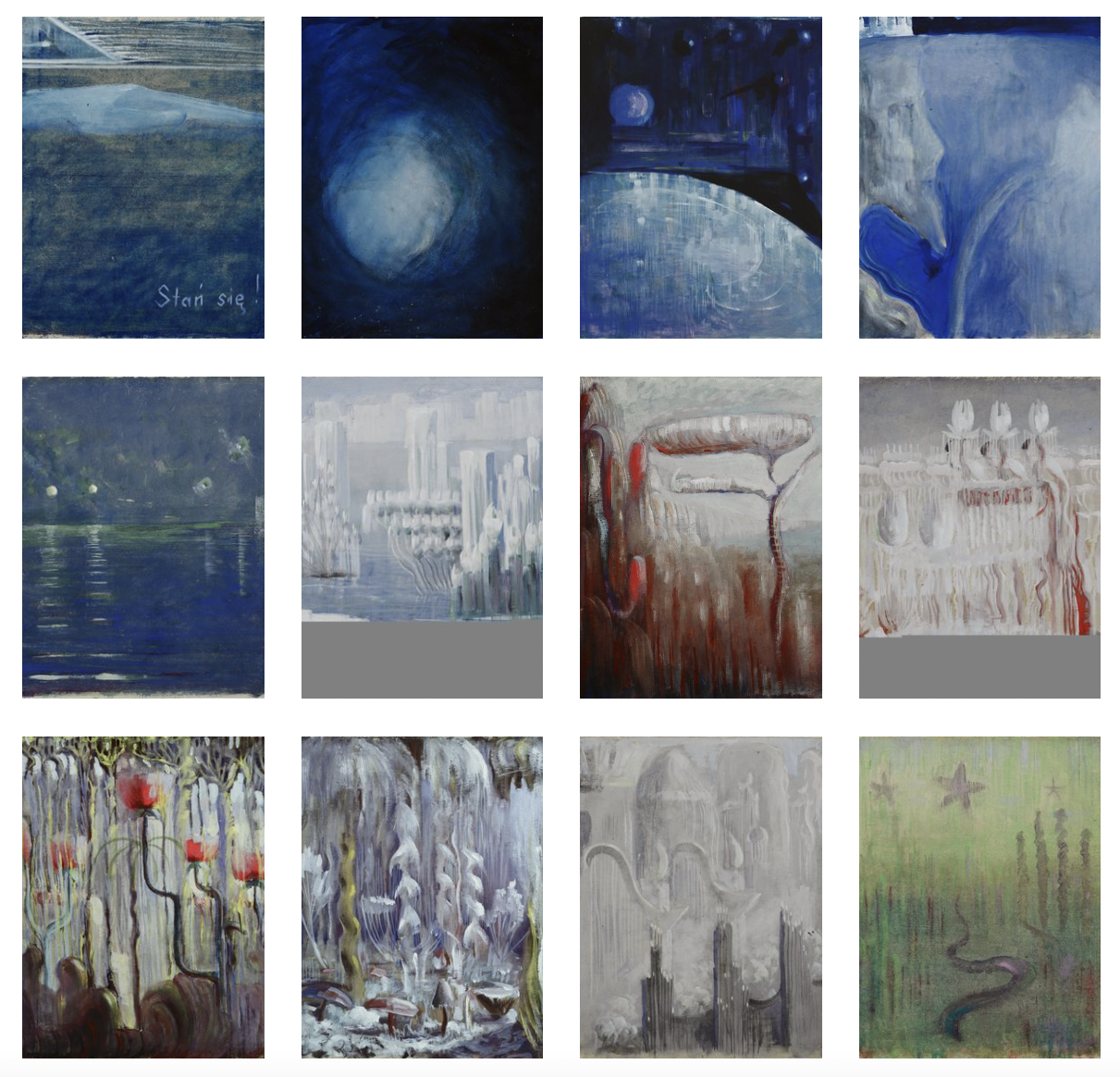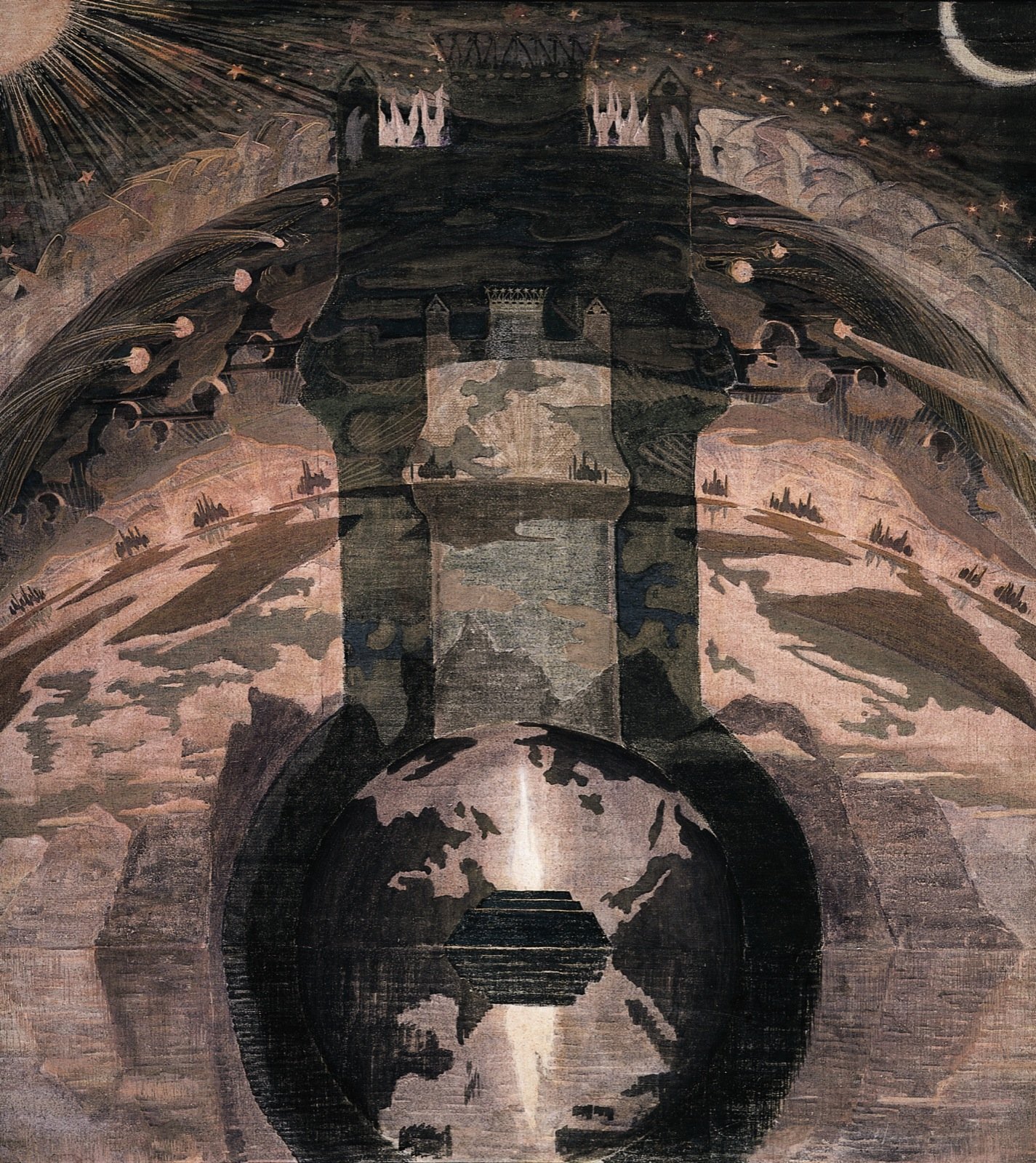ČIURLIONIS – The mysterious world of Lithuanian artist on display at Dulwich Picture Gallery
Coming from Lithuania, I was more than thrilled to visit the exhaustive exhibition held at Dulwich Picture Gallery in London, where more than 100 artworks by Lithuanian artist Mikalojus Konstantinas Čiurlionis are currently on display until 12 March 2023.
Entitled MK Čiurlionis: between worlds, the exhibition sheds light on an incredible variety of interests by the artist, with a focus on humankind’s relationship to the universe and on themes and motifs placing his art in the frame of European Symbolism.
Čiurlionis is probably the most famous Lithuanian painter and composer of all times, and left a profound impact on Lithuanian art and culture. Born in 1875 in the small town of Varėna, he was the oldest son of nine children. His talent for music developed early in life and his father, an organist at the local church, taught him to play piano and organ. Later, he studied in the Warsaw and Leipzig conservatories.
During his lifetime, the artist composed more than 400 pieces of music including works for piano, symphony orchestra, string quartet, and organ. Around 1902, he widened his interests to include painting. He therefore joined the Warsaw School of Fine Arts, where he studied from 1904 to 1906. During a period of six years (1903-1909) he produced over 300 paintings and drawings. At the same time, he was writing music and literary works. He died in 1911 from pneumonia, aged only 35.
Some art critics believe Čiurlionis was ahead of his time and was not understood or accepted by the art world during his lifetime. Others affirm he was a pioneer of European Symbolism. According to art historian Rasa Andriušytė-Žukienė, the artist “is closely aligned with European Symbolism by similar themes and motifs, and symbolic treatment of the subject matter”.
The influence of abstract art, symbolism, impressionism, art nouveau, and even Japanese art, is quite evident in all his production. The majority of works – including paintings, etchings, drawings, musical works and letters – are housed in the M.K. Čiurlionis National Museum of Art in Kaunas. This is the first time that an exhibition of such extent is held in the United Kingdom.
Although the artist’s music is performed everywhere in the world, his paintings rarely leave Lithuania, mainly because of their fragility. Čiurlionis couldn’t afford oil paint or large canvases, so most of his works are pastels – or tempera – on paper or card, usually depicting fantasy lands full of forests, mythological cities, anthropomorphic mountains and clouds, in a glorious range of colours.
The Dulwich exhibition features paintings created throughout his short career and includes works such as Creation of the world (a cycle of 13 paintings, 1905-1906), Angels (Paradise) (1909), Fairy tale of kings (1909), Rex (1909), or musical paintings the likes of Sonata of the sea (1908), Winter (a cycle of 8 paintings, 1907) and Zodiac signs (a cycle of 12 paintings, 1906-1907).
As I moved from one painting to the other, I was constantly invited to dive into different worlds that balanced fantasy and reality, as in - for instance - the Creation of the World cycle (above, and in the cover). I could witness the artist’s interest in the origin of the Universe, its structure and evolution, the creation of the planets and life on Earth. At the same time, the elements of religion (a portrait of God, and mystery), unknown vegetation and places are all part of this piece.
During his lifetime Lithuania was part of the Russian Empire and there were cultural restrictions, therefore patriotism and folk tales were prominent in many artworks by local artists. For example, in the painting Fairy tale of kings (below), a king and queen are holding a Lithuanian landscape that is shining like the Sun in a dark forest. In his book Čiurlionis, published in 1994, writer Jonas Rūtenis defined this feature as “a Lithuanian village shining with culture and traditions”.
Nature was also a popular subject in his artwork, but even here Čiurlionis added some magical elements. For example, in the Winter cycle, abstract landscapes portray snow and frost – a common sight in Lithuania – along mystical lights, forests, and white mountains that are quite unusual for that part of the world.
Another masterpiece, entitled Serenity (1903-1904), depicts a large mountain near the sea, although the title is misleading in this case: a closer look revealed, in fact, two lights looking like eyes of a giant monster staring back at the viewer.
Čiurlionis defined himself a ‘synthesist’. He used colours and rhythm to paint music and named his works after musical genres, uniting principles of music and painting. The Dulwich Gallery displays three out of seven Sonata cycles, including the most known one: Sonata of the sea. Divided into Andante, Allegro and Finale, the trio mirrors the different parts of a musical sonata aligned with the corresponding movements of the sea. By fusing music and painting, Čiurlionis expressed Modernism much more intensely than any other artist of Central and Eastern Europe.
His best-known work Rex (above), is the highlight of the exhibition in London and it is also my favourite masterpiece by Čiurlionis, because it contains an ample array of layers and details. What strikes me the most is that every spectator can detect different elements and grasp diverse meanings. The painting combines symbolism, cosmology and philosophy, while the artist explores the Universe – planet Earth, moons, comets – and questions mankind’s place in the world. A white king is sitting on his throne, holding the Sun, and his big shadow (or a black king) could be perceived as day and night, good and bad, or yin and yang. In Rex, which is also the largest artwork in the exhibition, Čiurlionis presents his vision of humankind’s intricate relationship with the earthly and the celestial.
Although I’ve been to the M.K. Čiurlionis National Museum of Art in Kaunas many times, the exhibition at Dulwich Picture Gallery offers a different perspective on the artist’s production. The artwork is displayed in small rooms painted in dark deep colours like purple or green, which create an intimate feeling and make these small scale paintings, mainly in tempera on paper, stand out.
Čiurlionis used symbols and shapes, not to make things more enigmatic or complicated, but rather to enable our understanding and help us “feel” his paintings. His works are not just pretty but powerfully thought provoking. After all, isn’t that the purpose of art?
In the cover: Creation of the world (XIII)
Images courtesy of the M.K. Čiurlionis National Museum of Art






